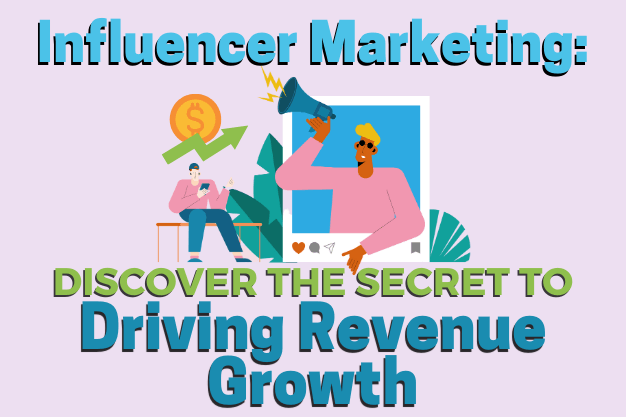Nano-influencers and micro-influencers are content providers and key opinion leaders (KOLs) that have smaller audiences ranging from 10,000 to 75,000 followers. They frequently fly under the radar because of their relatively small following.
The cool part? Their conversion rates compete favorably with celebrities and individuals who have larger audiences, despite having a smaller following. Forbes claims that compared to macro-influencers, micro-influencers drive campaign engagement rates that are 60% better than macro-influencers.
With the right strategy behind your micro- and nano-influencer marketing plan, you can dramatically increase your sales. Here’s what you should know.
Why Should I Consider Influencer Marketing?
Using influential people to promote a product is called “influencer marketing.” Influencers are social media superstars, tastemakers, trendsetters, and thought-leaders with substantial and passionate online communities of followers.
It’s a powerful way to spread the word about your brand, drive qualified traffic to your website, and influence buying decisions through product placements and endorsements through social media.
What Exactly are Nano- and Micro-influencers?
Micro- and nano-influencers are people or accounts with modest yet devoted followings. Micro-influencers have an audience of between 10k and 75k, while nano-influencers have less than 10k followers.
Working with an influencer that has a smaller following has several advantages, but the biggest is the close ties and trust they have with their followers.
Consumers are more likely to follow advice or recommendations because, with a smaller audience, these influencers are more likely to engage one-on-one with followers.
As a result of this connection, your marketing spend will generate higher conversion rates and better ROI. And the best part? Smaller influencers are often less expensive, making your marketing budget stretch further.
Small-scale influencers want to grow their following and are typically more eager to please brands because they are just as excited to work with you as you are with them. Like being receptive to suggestions for changing posting deadlines or other details. Plus, micro and nano-influencers typically respond to contact more quickly since their inboxes aren’t as full of messages.
Some brands avoid collaborating with small-scale influencers that have fewer followers because they want a bigger audience. However, nano and micro-influencers have built solid relationships with their audiences, are willing to accept lower compensation, and are more likely to collaborate to produce content.

Finding and Recruiting Micro- and Nano-Influencers
Finding the undiscovered gems that fit within your budget and have a very engaged audience is the key to developing a successful campaign with micro- and nano-influencers.
Here’s what you should do:
1. Search for an influencer marketplace or database, there are a lot of options out there.
One of our recent favs is a database called www.impact.com because it does most of the work for you.
It provides a summary of an account’s followers, engagement level, active platforms, and other information. A marketplace also discloses the categories, demographics, and values of potential partners so you may locate influencers quickly that align with your brand identity.
2. Be specific about who you want to collaborate with.
The smaller the audience, the more tailored your messaging must be. Get particular when searching for and enlisting micro- and nano-influencers; seek collaborators who are already familiar with and fluent in your brand’s terminology.
3. Be sincere while communicating with influencers.
Making emotional connections is essential to establishing long-lasting relationships with influencers. As your partnership grows, you should tailor your outreach messages and focus on keeping your relationships strong. Influencers, just like anyone else, want to work with people they like.
4. Continue to expand your network of influencers.
After your Influencer program is up and running, keep up your recruitment efforts! Continue reaching out and setting up new campaigns. Some collaborations will be better than others. Eventually, you might want to collaborate with larger influencers and widen your reach. But whatever you do, don’t stop. Your marketing push will be fueled by consistency, allowing you to forge new relationships and raise brand awareness.

How to Control Micro and Nano Influencers to Create Lucrative Connections
Establishing a win-win environment where you and your influencers prosper is essential to securing long-term connections that increase revenue.
1. Automate manual processes to improve workflow.
When you onboard and manage several influencers simultaneously, busy work can pile up. Automation tools can ease some of the pressure, so you don’t fall behind. Consider automating your tracking and reporting. Automatically generate reports that show each influencer’s engagement and conversions.
2. Decide on a performance-based compensation strategy.
Influencers with smaller followings charge a fraction of what celebs do.
However, you must still compensate them for their time and effort.
Some common ways that influencers get paid are:
- Performance bonuses: When a user converts or initiates a “success event,” marketers pay influencers. These actions include purchasing, subscribing to services, signing up for newsletters and free trials, downloading apps, etc.
- Participation bonuses: this model rewards efforts made at the top of the funnel, including raising brand awareness.
- Hybrid model: influencers receive a base fee in addition to participation and/or performance bonuses for particular user behaviors.
- Flat Rate Fee: Influencers are paid flat fees by brands for each post or campaign.
- Gifting: Companies provide influencers gifts of goods or services in exchange for their work producing content.
- Tiered charge: based on the volume of engagements and/or contributions to the buyer journey, the fee is determined.
*According to a WARC and a recent whitepaper report 84% of influencers (both small- and big-scale) favor a flat fee payment, while 47% are open to a hybrid model.
3. Give your partner’s experience top priority.
For an influencer of any size, working with a well-liked business is thrilling. When micro- and nano-influencers collaborate with an ideal brand, they may gain the momentum necessary to accelerate the growth of their audience. You can help them grow by providing them with a memorable experience, which is a win-win for everyone.
When partners feel valued, they’ll go above and beyond when promoting your business and goods. They want to develop a business relationship with you, and the more praise they receive for their efforts, the more valuable their content becomes.
- Milestones: Incentivize partners for accomplishing certain milestones or goals. Offer them a performance bonus, when they generate a specific number of new leads or increase their commission at a particular conversion rate.
- Pay influencers promptly. If you use an influencer creator platform it keeps track of and streamlines payments, so you never miss one.
- Want to go above & beyond for your partner? A special thank-you gift is always appreciated. A bottle of wine, a day at the spa, tickets to a sporting event, etc. Everyone always appreciates an unexpected gift and is a great way to make your influencer feel appreciated and will strengthen your relationship.
Increase Your Revenue Significantly by Reaching Smaller Audiences
Strong influencer-based marketing strategies necessitate a variety of alliances, even with modest followings. It’s simple to get bogged down in statistics and think that more is always better, but after a few partnerships with micro- and nano-influencers, you’ll understand how you may reap significant benefits from working with the appropriate people.
If you need help incorporating influencers into your social media strategy, schedule a consultation with your local digital marketing agency. They can help you determine the best approach to reaching your goals and form effective collaborations.

